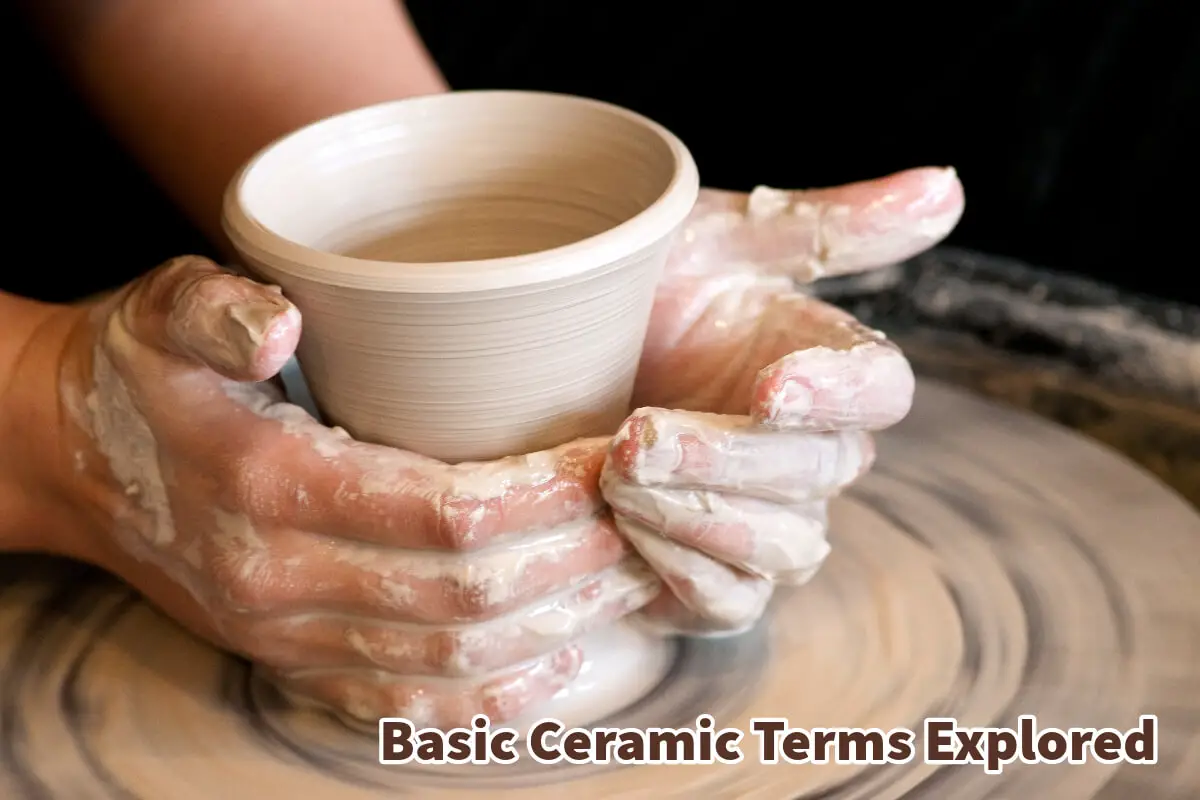Numerous essential terms are associated with ceramics, and understanding them is crucial for grasping the entire ceramic-making process. At Mondoro, we specialize in ceramic manufacturing, making these terminologies particularly valuable for developing ceramic products.
In this blog post, we will list some of the most essential terms for ceramics and production. Read on as we explore them.
Table of Contents
- Exploring Basic Terms In Ceramics
- Definitions And Importance Of Ceramic Terms:
- Ceramics:
- Clay:
- Types Of Clay (Earthenware, Stoneware, Porcelain):
- Methods Of Working (Coil, Pinch, Slab, Slip Casting, Throwing):
- Stages Of Clay (Slip to Bisque):
- Firing Stages (Fire, Firing Range, Bisque Fire, Glaze Firing):
- Tools (Bat, Banding Wheel, Calipers, etc.):
- Terms (Centering, Coil, Compress, etc.):
- Glaze:
- Vitrification:
- Wedge:
- Related Content
Exploring Basic Terms In Ceramics
In the ceramics industry, many specialized terms can enhance your understanding of the craft and its significance. Continue reading as we delve into these critical terminologies and examine their importance.
1. Basic Ceramic Terms
Ceramics
The term “ceramics” refers to the art and science of creating objects from clay. It’s crucial because it encompasses the entirety of clay art and production, serving as an umbrella term for everything that follows.
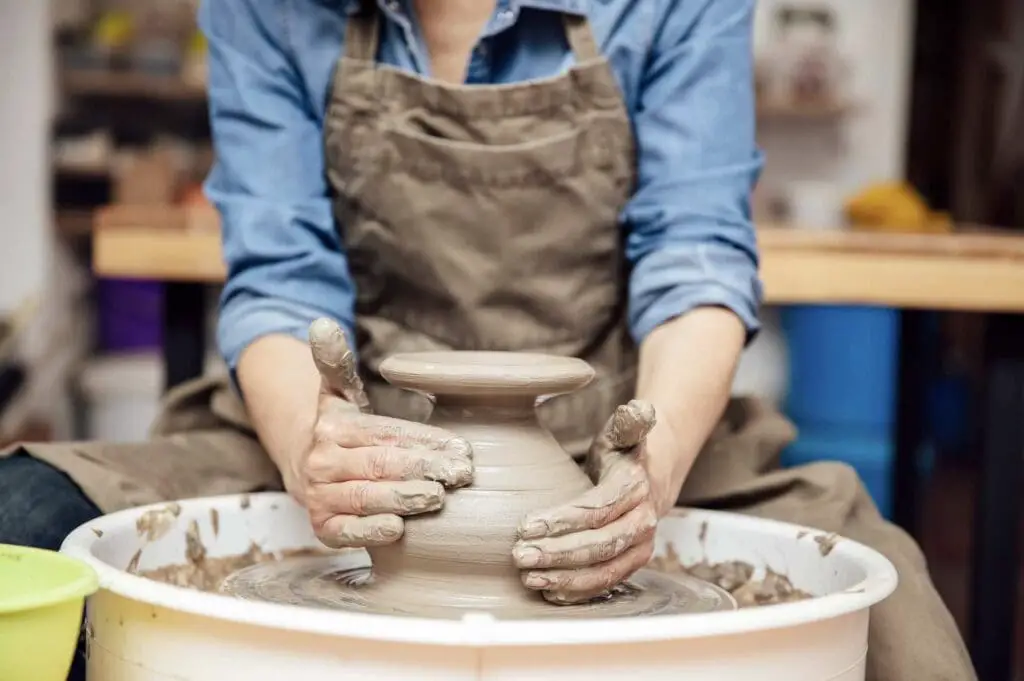
Clay
Clay is a naturally occurring material comprised of fine-grained minerals. Its plastic quality allows it to be shaped and molded. It mainly contains alumina, silica, and water. Understanding clay is fundamental because it’s the raw material for all ceramic objects.
Three Types Of Clay
Earthenware
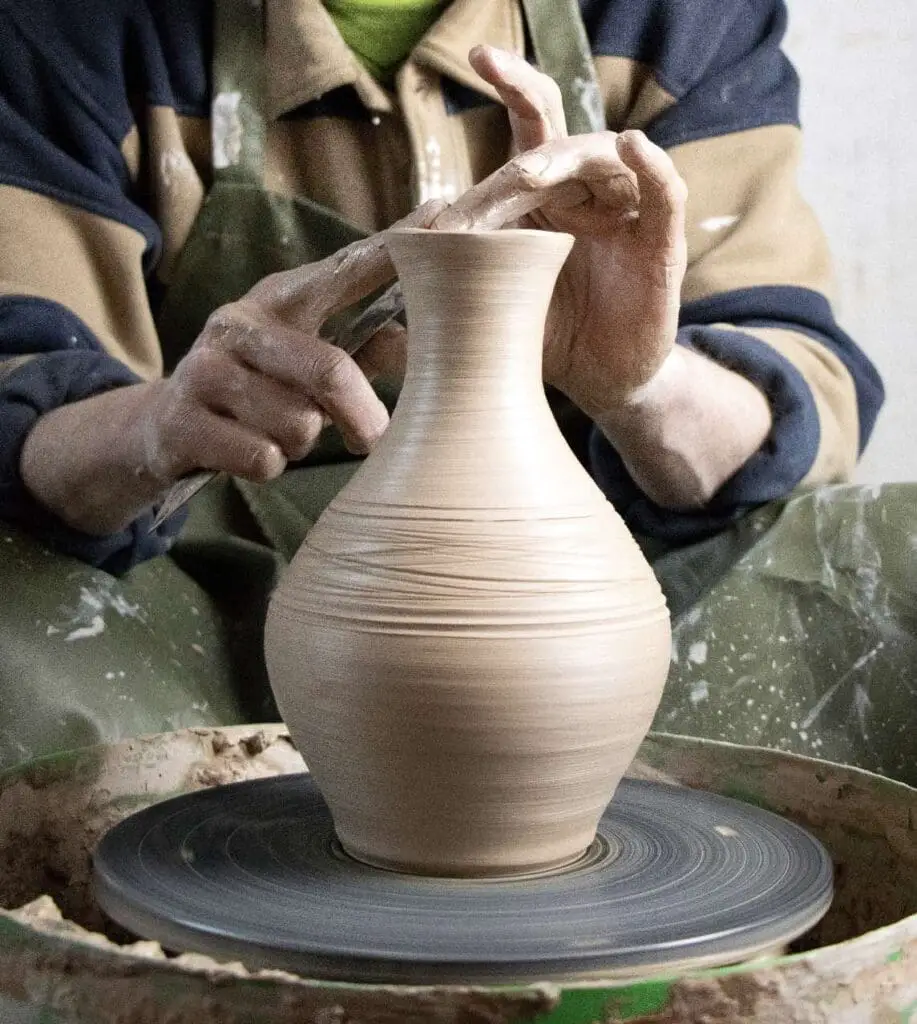
This type of clay fires at low temperatures, usually between 1,830-2,010 degrees Fahrenheit. It is porous and chips easily. Earthenware is usually cheaper and less durable than other types but is ideal for decorative pieces.
Stoneware
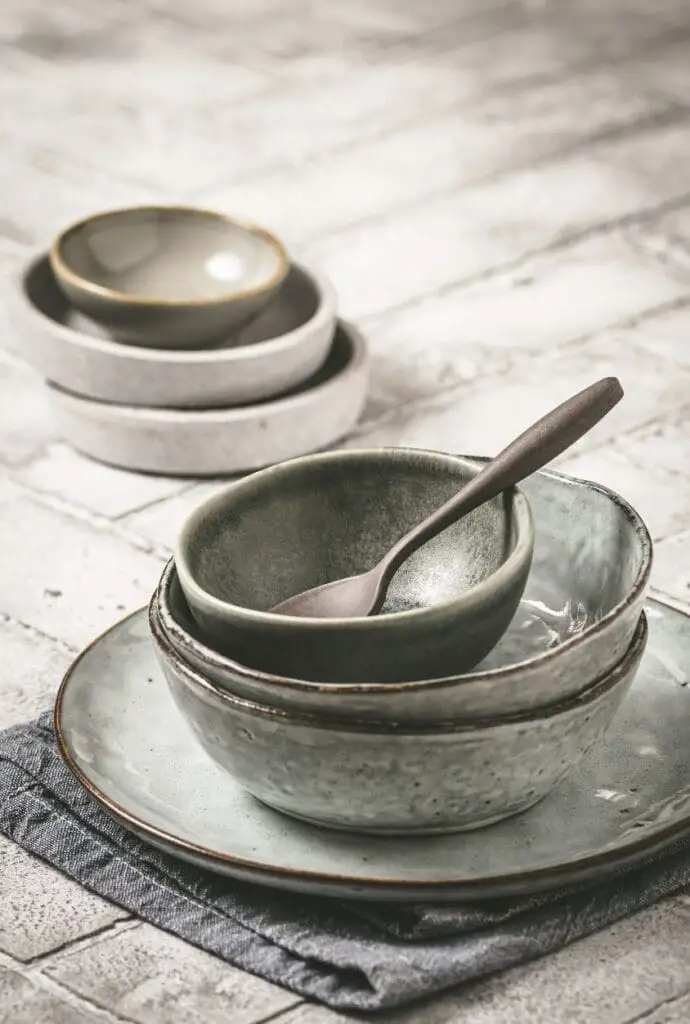
Stoneware fires at high temperatures and is durable, holding water without a glaze. It’s generally used for sturdier objects like mugs and baking dishes.
Porcelain
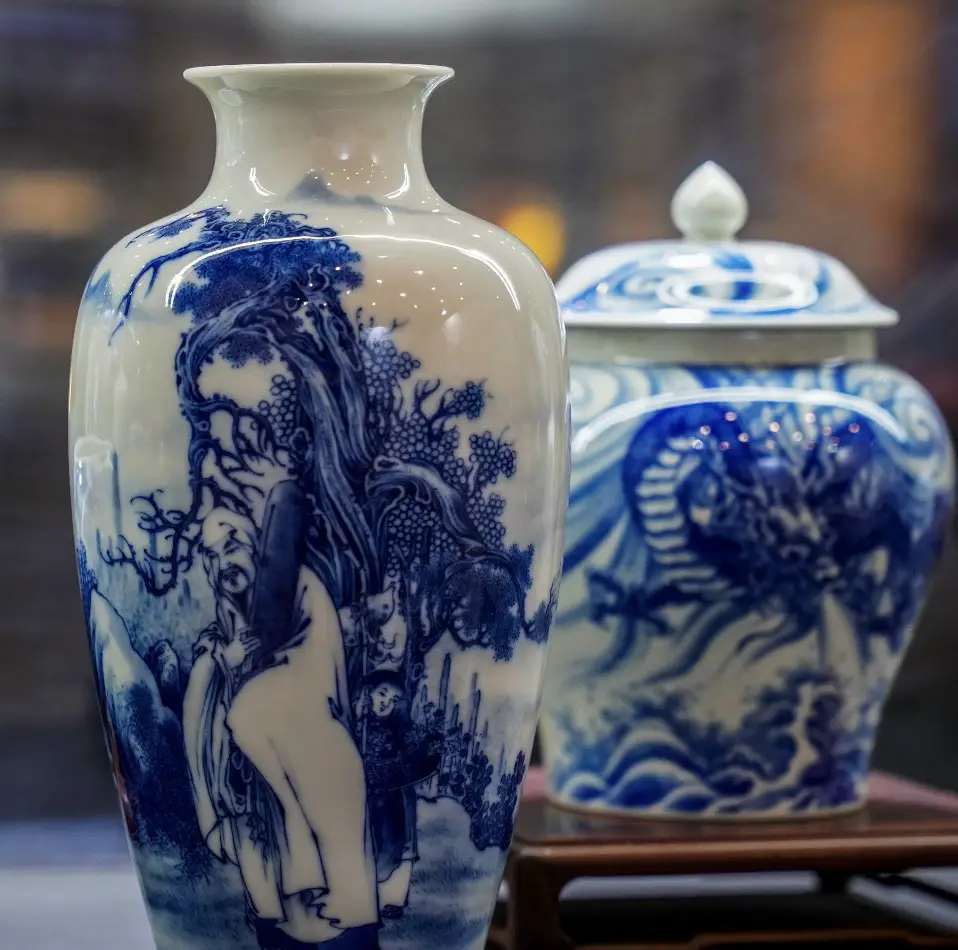
Known for its high firing temperatures and translucence, porcelain is generally considered the most refined and complex type of clay. It’s often used in fine art and high-quality dishware.
Methods Of Working
Coil
This technique involves rolling clay into rope-like coils and stacking them to create a shape, often used in making large and sculptural pieces.
Pinch
The “pinch” technique is as essential as possible: using your fingers to manipulate clay into shapes.
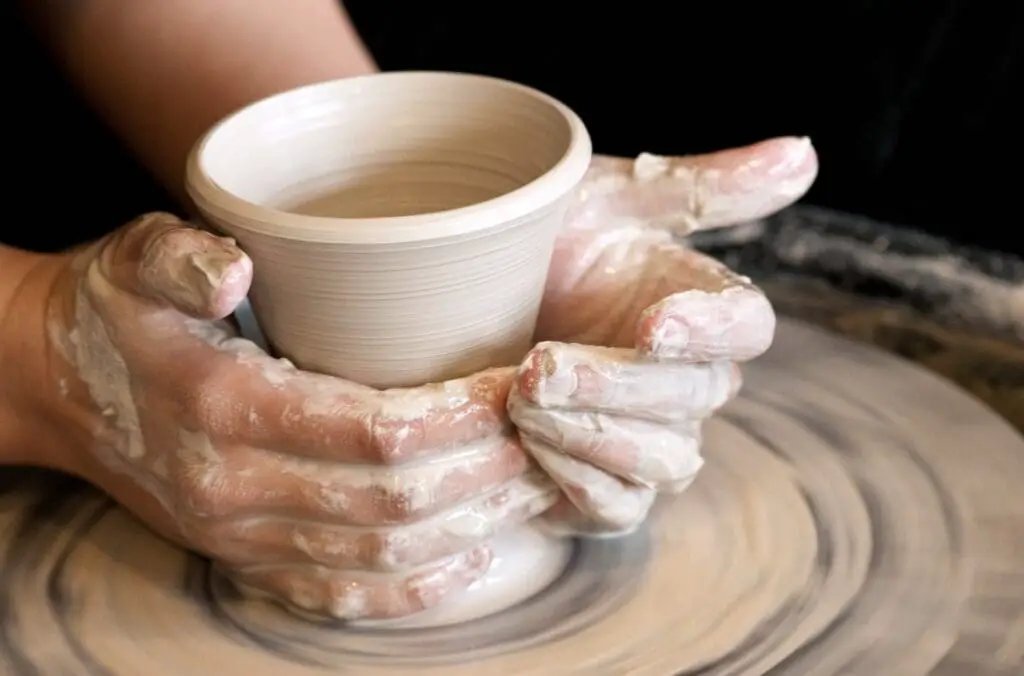
Slab
Slab construction involves rolling clay into flat sheets and assembling shapes from them.
Slip Casting
Slip casting is a mass production method involving pouring liquid clay into a mold, allowing for highly detailed pieces.
Throwing
This technique uses a potter’s wheel to create symmetrical, round shapes.
Stages Of Clay
Slip
This is clay in liquid form, used in casting and for joining pieces of clay together.
Plasticity
This describes clay’s unique ability to hold shape and reshape without cracking.
Leather Hard
This stage of clay is ideal for carving and joining pieces. It’s when the clay has partially dried but is still malleable.
Bone Dry
At this stage, the clay has lost almost all its moisture and is ready to be fired.
Greenware
This term refers to unfired pottery, a stage where the clay object can still be modified.
Bisque
Bisque refers to clay that has been fired once and is challenging but still porous.
Firing Stages
Bisque Fire
This is the first firing, which hardens the clay but leaves it porous to absorb glaze.
Glaze Firing
This is the second firing, with glaze, that makes the clay object impermeable.
Tools
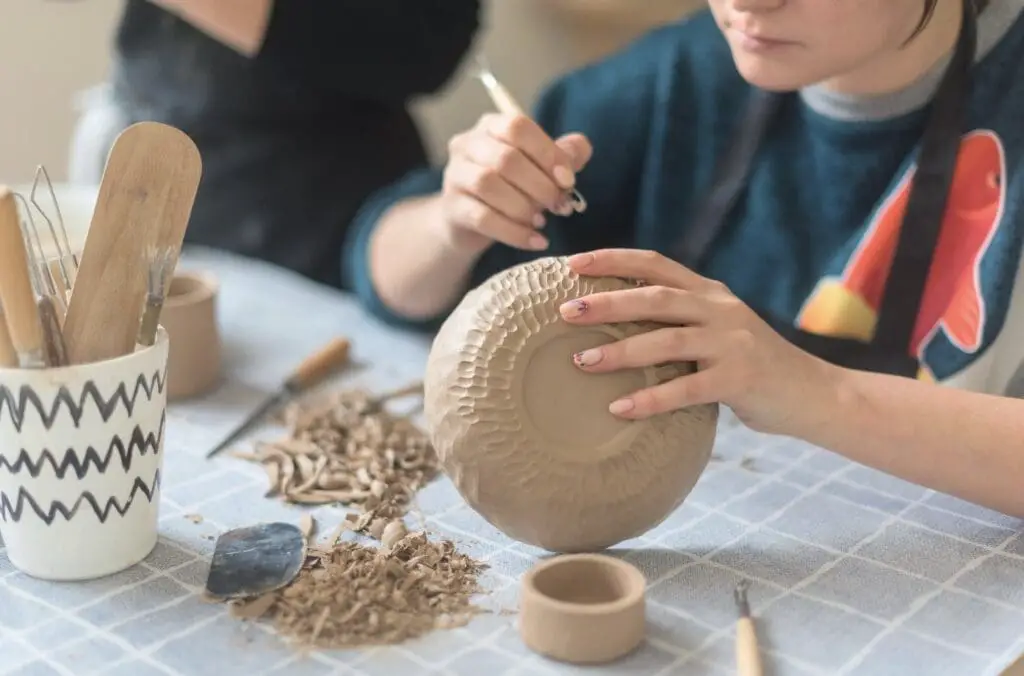
Bat
A bat is a flat disc used on the wheel head when throwing pots.
Banding Wheel
This is a manually operated spinning platform used for sculpting or painting pottery.
Calipers
Calipers are used for measuring the symmetry of a pot, often useful for lids.
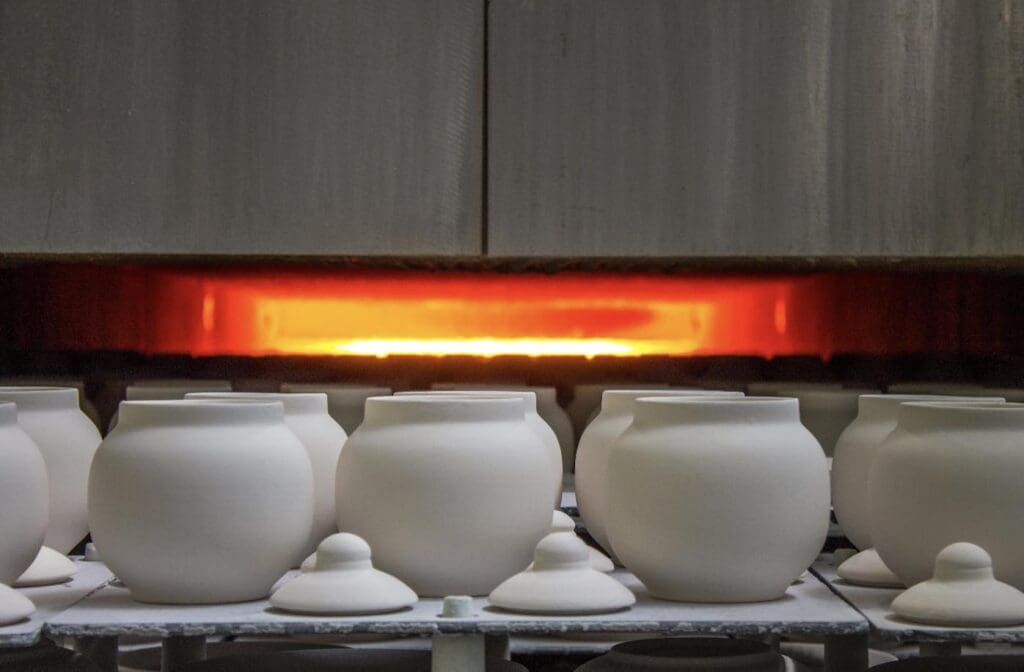
Kiln
A kiln is essentially the oven used to bake clay.
Additional Terms
Centering
Centering is aligning clay on the potter’s wheel to make symmetrical pieces.
Grog
Grog is fired clay ground into granules and added to raw clay to reduce shrinking.
Vitrification
This term refers to the stage where the clay becomes a mature, glass-like substance, rendering it impervious to water.
The stage at which the fired clay body has reached its maximum hardness and impermeability. At this stage, the clay particles fuse and become like glass, losing their porous nature.
Wedge:
Wedging the clay with your hands, push it outward, and fold it back to remove air bubbles and ensure uniform consistency.
Definitions And Importance Of Ceramic Terms:
Below are some of the definitions and importance of the ceramic terms:
Ceramics:
Understanding the basic definition of ceramics as the creation of objects from clay sets the foundation for any ceramics practice. One cannot begin to explore the craft without knowing what ceramics entail.
Clay:
As the fundamental building material in ceramics, understanding clay’s properties—such as its composition and malleability—can profoundly impact the creation process.
Types Of Clay (Earthenware, Stoneware, Porcelain):
Each type of clay has its unique characteristics and limitations. Knowing these will help the artist choose the suitable material for their project, whether an earthenware flowerpot or a fine porcelain vase.
Methods Of Working (Coil, Pinch, Slab, Slip Casting, Throwing):
The techniques employed in shaping clay determine the nature of the finished product. An artist can choose methods based on the design needs and personal preferences.
Stages Of Clay (Slip to Bisque):
Understanding the stages of clay helps artists decide when to perform specific tasks, like attaching handles or applying glaze, to avoid issues like cracking.
Firing Stages (Fire, Firing Range, Bisque Fire, Glaze Firing):
The firing process’s temperature and stage influence the final piece’s strength and color, affecting functionality and aesthetics.
Tools (Bat, Banding Wheel, Calipers, etc.):
Each tool in ceramics serves a specific function. A potter’s wheel is essential for throwing, while calipers ensure precise measurements.
Terms (Centering, Coil, Compress, etc.):
Terminology like “centering” or “compress” offers a shorthand for complex processes. Understanding these terms enables effective communication between artists, whether discussing techniques or troubleshooting.
Glaze:
Glaze serves not only an aesthetic function but also a practical one. It makes the pottery food-safe and waterproof, allowing for a broader range of uses.
Vitrification:
This term is critical for understanding the lifecycle of a ceramic piece. A fully vitrified piece has different properties, such as strength and impermeability, compared to one that has not reached this stage.
Wedge:
One of the preparatory steps that can make or break a piece. Wedging eliminates air pockets in the clay, which could otherwise cause cracks during firing.
Each one of these basic ceramic terms carries its weight in the ceramics world. The list may seem daunting, but understanding these basics can significantly enhance both the process and the product.
Like any other specialized field, ceramics has its language; mastering it is the first step toward mastering the art form. Whether you are an enthusiast just starting or an experienced artist, familiarizing yourself with these terms will undoubtedly enrich your ceramics experience.
Understanding these terms is critical for anyone interested in ceramics. It provides the vocabulary needed to understand processes, techniques, and tutorials further.
Knowing these terms can significantly impact the quality of your work, making you more adept at crafting ceramic pieces and solving problems that arise during the creation process.
We would love to talk to you if you want to see how we can help you with any of your ceramic production.
Find out more about how Mondoro can help you create, develop, and manufacture excellent home decor and furniture products – don’t hesitate to contact me, Anita. Check out my email by clicking here or become a part of our community and join our newsletter by clicking here.
Mondoro gives out a FREE Lookbook to anyone interested. You can receive a copy of our latest Lookbook by clicking here.
Listen to our Podcast called Global Trade Gal. You can find it on all major podcast platforms. Try out to listen to one of our podcasts by clicking here.
Subscribe to our Mondoro Company Limited YouTube Channel filled with great videos and information by clicking here.
Related Content
How Does The Firing Temperature Affect Ceramics Production?
If a ceramic piece is not fired at the correct temperature, it will make a huge difference in the final product’s outcome. It is also important that the correct kiln is used for the production process. This is because many things must be considered when using a kiln to fire ceramics. During the firing process, many things can cause the final product to fail or crack.
You can learn more by reading our blog, How Does The Firing Temperature Affect Ceramics Production?, by clicking here.
Ceramics Raw Material From Traditional To Advanced
The fascinating world of ceramics is built upon a rich tapestry of raw materials that have evolved from simple, naturally occurring substances to complex, engineered compounds. These raw materials serve as the foundational elements from which an astounding array of traditional and advanced ceramics are crafted.
You can read our blog on Ceramics Raw Material From Traditional To Advanced by clicking here.
Can You Glaze Pottery Without A Kiln?
To start manufacturing or making pottery, you may want to know if you can glaze or fire pottery without a kiln.
Glazed pottery, stoneware, ceramics, and porcelain must be fired at high temperatures. You need to have a kiln to fire them at these high temperatures. There are several kilns, but the main kilns are electrical kilns, fuel-burning kilns, and gas kilns.
You can learn more by reading our blog, Can You Glaze Pottery Without A Kiln? by clicking here.

